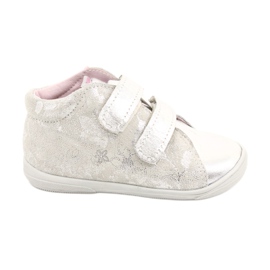Preventive shoes for children
Introduction to preventive shoes for children
Preventive shoes for children are specialized footwear that aims to support the proper development of the feet in the youngest users. Choosing the right shoes is a key element of orthopedic prevention, especially during the period of intensive growth and development of the child. This type of footwear is designed to ensure adequate support, depreciation and correct footing when walking and running. In the article we will discuss what to look for when choosing preventive shoes, what are their most important features and how to care for the health of the child's feet from an early age.
Why are preventive shoes important for children?
Healthy feet are the foundation of the proper development of the entire osteoarticular system in children. Inadequate footwear that does not provide adequate support and depreciation, can lead to the development of deformation, pain or other orthopedic problems in the future. Preventive shoes are designed to protect children's feet from incorrect arrangement, ensuring stability, flexibility and correct biomechanics during each step. Regular use of appropriate footwear is crucial in the prevention of flatfoot, valgus or other diseases that can affect the comfort of the child's daily functioning.
Key features of preventive shoes for children
Preventive shoes for children should be characterized by high quality of workmanship and a series of properties that ensure healthy foot development. The most important are: adequate flexibility, proper width in the fingers and the front of the footwear, durable and non -slip sole, as well as the appropriate support of the arc of the foot. In addition, the shoes should be made of breathable materials that allow you to adjust the temperature and moisture, which prevents the formation of burns and other skin problems. It is also important that the footwear has adjustable with Velcro or shoelaces, enabling adaptation to the degree of development of the child's foot.
How to choose the right preventive shoes for a child?
Choosing the right preventive shoes requires attention to several key aspects. First of all, you should measure the child's foot in both lengths and widths, choosing footwear with a supply to the place on your fingers. It is important that the shoes have a well -fitted width and do not compress any part of the foot. Before buying, it is worth consulting with an orthopedist or children's footwear specialist. Test test on the thinnest sock, checking that the fingers have enough space, and the assessment of the quality of workmanship are the basic steps in the selection process. "}, {










